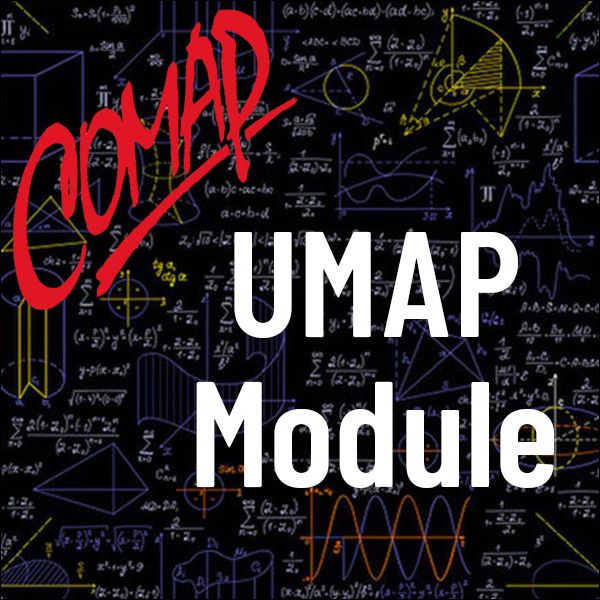Some Applications of Exponential and Logarithmic Functions (UMAP)
Author: W. Thurmon Whitley
This unit contains five examples of exponential and logarithmic functions being used to study the behavior of real-world phenomena. The examples study the technique of dating very old objects by using the radioactive element of carbon-14, the infusion of glucose into a patient's body, and increase and decrease in the sizes of populations of organisms in the cases in which the organisms compete among themselves, and in which they compete with other species. This module reinforces differentiation and integration techniques from elementary calculus which involve either exponential or logarithmic functions. It allows students to: 1) observe techniques from elementary calculus being used to study the behavior of real-world phenomena; 2) contrsuct mathematical models of some simple real-world situations; and 3) understand assumptions and refinements needed in the construction of mathematical models.
Table of Contents:
1. INTRODUCTION
2. RADIOCARBON DATING
2.1 How Radiocarbon Dating Works
2.2 An Equation for the Rate of Decay
2.3 The Amount of C14 Present at Time t
2.4 How Old is the Object?
3. INTRAVENOUS FEEDING OF GLUCOSE
3.1 An Outline of the Problem
3.2 A Differential Equation Related to the Glucose Problem
3.3 The Amount of Glucose Present at Time t
3.4 An Equilibrium Point
4. POPULATION GROWTH
4.1 The Basic Problem
4.2 The Fundamental Assumptions of the Model
4.3 A Growth Rate Equation
4.4 The Size of the Population at Time t
4.5 Bounds on the Population Size
4.6 The Maximum Rate of Increase of Population Size
4.7 Some History and Applications of the Model
5. WOLVES VERSUS RABBITS
5.1 A Battle for Survival
5.2 The Underlying Assumptions and the Basic Equations
5.3 An Equation Relating the Two Population Sizes
5.4 Solutions to the Wolf-Rabbit Equation
5.5 Maximum and Minimum Values of the Population Sizes
5.6 Graphing the Wolf-Rabbit Equation
5.7 The Average Population Sizes
5.8 Some Limitations of the Model
6. MODEL EXAMINATION
7. ANSWERS TO EXERCISES
8. ANSWERS TO MODEL EXAMINATION
9. REFERENCES AND SOURCES FOR FURTHER READING
10. ACKNOWLEDGMENTS

Mathematics Topics:
Application Areas:
Prerequisites:
You must have a Full Membership to download this resource.
If you're already a member, login here.